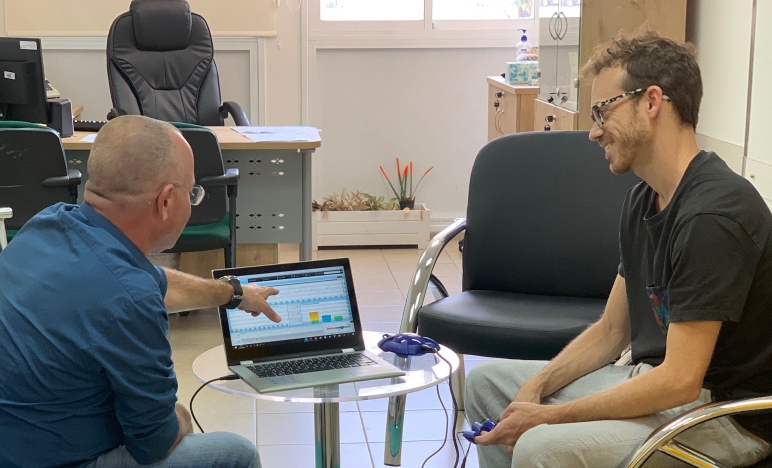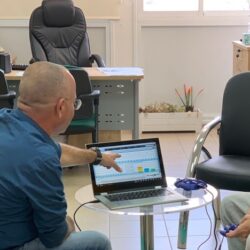CBT with Biofeedback: Effective Treatment Process and Duration Explained
Learn how CBT with biofeedback empowers patients through relaxation techniques, short-term therapy, and long-term mental health improvement. Ideal for adults and children.
Cognitive Behavioral Therapy (CBT) has long been recognized as one of the most effective treatments for a range of mental health conditions. When combined with biofeedback, its impact becomes even more profound. This integrative approach helps individuals gain control over their physiological and psychological responses, providing a comprehensive treatment experience. In this article, we’ll explore the process of CBT with biofeedback, highlighting how it works, what patients can expect, and the typical duration of treatment for both adults and children.
What is Cognitive Behavioral Therapy (CBT)?
CBT is a structured, time-limited, and goal-oriented psychotherapy approach. It is based on the concept that thoughts, feelings, and behaviors are interconnected, and that changing negative thought patterns can lead to behavioral and emotional improvements. CBT is widely used for treating anxiety, depression, PTSD, OCD, and various stress-related disorders. It emphasizes practical self-help strategies, making it highly effective for long-term mental health maintenance.
Introduction to Biofeedback
Biofeedback is a mind-body technique that teaches individuals to recognize and regulate physiological functions such as heart rate, muscle tension, and skin temperature. By using electronic sensors to monitor bodily functions, patients can receive real-time feedback and learn to make subtle changes to achieve desired outcomes, such as reduced stress or improved emotional control. This empowers patients to actively participate in their own healing process.
How CBT and Biofeedback Work Together
When integrated, CBT and biofeedback create a powerful therapeutic synergy. CBT addresses the cognitive and emotional aspects, while biofeedback helps in managing physical symptoms. Patients can observe how their thoughts influence bodily responses and vice versa. This dual approach enhances self-awareness and equips individuals with actionable tools to manage stress, anxiety, and other mental health challenges more effectively.
The Treatment Process: An Overview
The CBT with biofeedback treatment process is structured yet flexible. Initially, patients undergo assessments to determine their specific symptoms and treatment goals. Therapy sessions are tailored to address both physical and psychological components. As patients progress, they learn and refine techniques that empower them to manage their responses independently.
Mastering Relaxation Techniques
A core part of treatment involves learning relaxation techniques to regulate bodily responses. These techniques include deep breathing exercises, progressive muscle relaxation, and mindfulness-based guided imagery. Patients are taught to use these methods during therapy and are encouraged to practice them regularly at home to reinforce skill mastery.
Physical Control Leads to Emotional Resilience
Controlling physical symptoms like rapid heartbeat or muscle tension can significantly reduce emotional distress. From a neurobiological perspective, reducing physical stress signals can positively influence brain regions involved in emotional regulation, such as the amygdala and prefrontal cortex. This paves the way for emotional resilience and better coping mechanisms.
Cognitive Flexibility Through Symptom Regulation
Once patients gain mastery over their physical responses, they develop greater cognitive flexibility. This means they can shift their thoughts more easily, even in distressing situations. Cognitive flexibility is essential for breaking cycles of negative thinking and promoting adaptive coping strategies.
Sense of Control as a Therapeutic Milestone
One of the most transformative aspects of CBT with biofeedback is the restored sense of control it gives patients. Many individuals struggling with anxiety or stress disorders feel overwhelmed by their symptoms. Gaining the ability to regulate those symptoms builds confidence, motivation, and optimism about recovery.
Patient Commitment and Responsibility
For therapy to be successful, patient commitment is crucial. Individuals are expected to take responsibility for their progress, including practicing techniques between sessions. Active participation reinforces learning and helps translate therapeutic gains into everyday life. Regular practice enhances skill retention and improves long-term outcomes.
Parental Involvement in Child Therapy
When working with children, parental involvement is not only recommended but essential. Parents attend several sessions where they receive guidance on supporting their child’s progress. They also learn to reinforce therapeutic strategies at home, creating a cohesive and supportive environment that fosters sustained improvement.
Duration of CBT with Biofeedback: Adults
For adults, CBT with biofeedback is generally short-term, typically lasting between 8 to 14 weekly sessions. Each session usually lasts about 45 minutes and focuses on skill-building, review, and real-time practice using biofeedback tools. The relatively brief duration makes this treatment efficient and accessible.
Duration of CBT with Biofeedback: Children
Children usually require a slightly longer treatment plan, ranging from 12 to 18 sessions. This extended timeframe accounts for developmental needs and the inclusion of parental sessions—typically around four—where caregivers are trained to support therapy goals. The collaborative approach ensures consistency and enhances treatment outcomes.
Follow-up and Maintenance Sessions
At the conclusion of the main treatment phase, two follow-up sessions are typically recommended. These sessions serve as checkpoints to assess the sustainability of treatment gains, troubleshoot any challenges, and reinforce core skills. Maintenance sessions can also be scheduled as needed to support long-term success.

Flexibility Based on Patient Needs
Although general timelines exist, the exact number of sessions may vary depending on the individual’s mental health status, symptom severity, and rate of progress. Therapists often adjust the pace and focus of sessions to meet the unique needs of each patient, ensuring personalized and effective care.
CBT with biofeedback offers a dynamic and effective approach to managing mental health. By teaching patients how to control physical
symptoms and reframe negative thoughts, this treatment empowers individuals to take charge of their well-being. Whether for adults or children, the structured yet adaptable nature of the therapy provides a clear path to recovery. With consistent effort, professional support, and guided practice, lasting improvements in emotional and physical health are well within reach.












